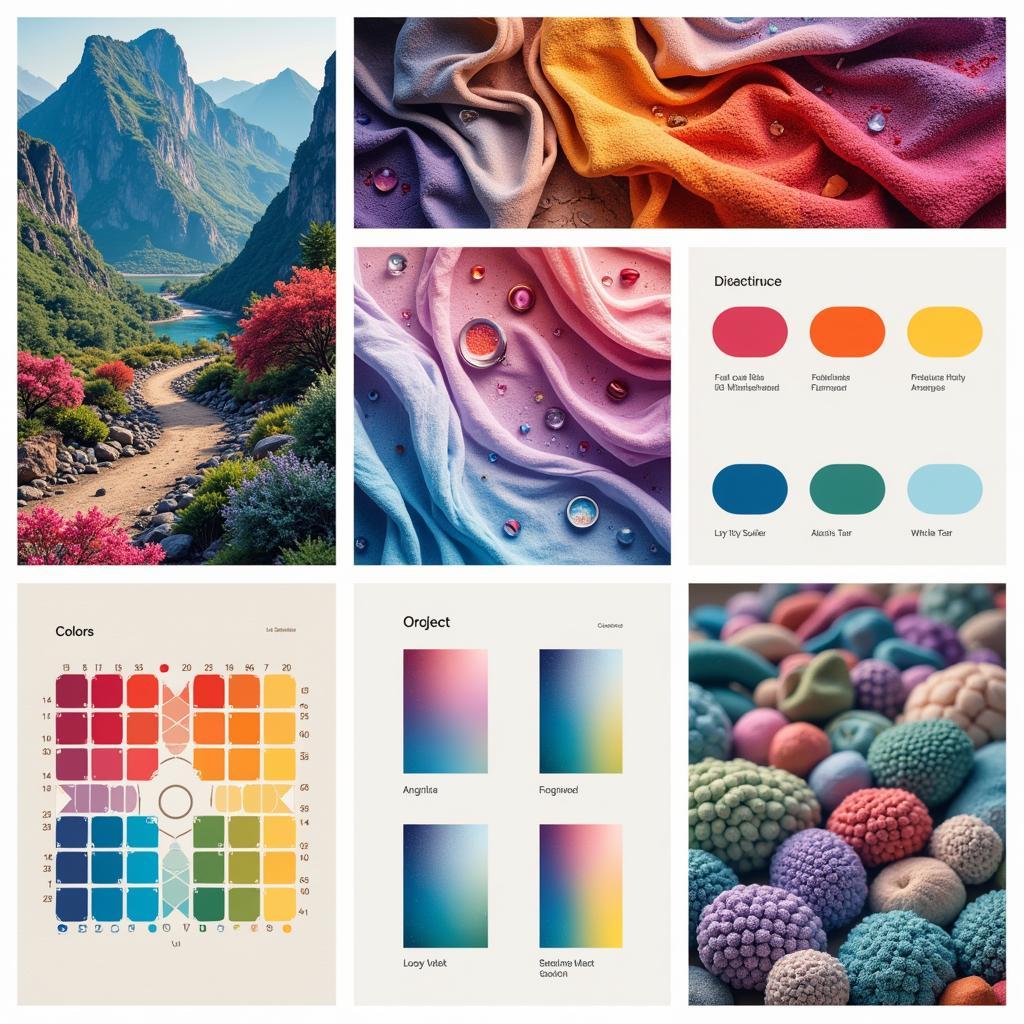Lab color, also known as CIELAB or Lab, is a color space that defines color based on human perception. Unlike other color spaces like RGB or CMYK, which define colors based on how they are mixed or displayed, Lab color focuses on how we see* color. This makes it an incredibly powerful tool for color management, design, and analysis, allowing for accurate color representation across different devices and mediums. It’s especially useful for understanding subtle color differences that might be missed in other color spaces. You might be interested to know more about different colors used by Labradorites what color is labradorite.
Understanding the Components of Lab Color
Lab color is a three-dimensional color space defined by three components: L, a, and b*. Each component represents a different aspect of color perception:
- *L (Lightness):** Represents the brightness of the color, ranging from 0 (black) to 100 (white). This component is crucial for understanding the overall intensity of a color.
- *a (Green-Red):** Represents the position of the color on the green-red axis. Negative values indicate green, while positive values indicate red.
- *b (Blue-Yellow):** Represents the position of the color on the blue-yellow axis. Negative values indicate blue, while positive values indicate yellow.
By combining these three components, Lab color can represent every color visible to the human eye. This makes it a comprehensive and versatile color model for various applications. What about the colors of your favorite football team? Find out what are alabama football colors.
Why is Lab Color Important?
Lab color offers several advantages over other color spaces, especially when precision and consistency are crucial:
- Device-independent: Unlike RGB and CMYK, which are dependent on the specific device used to display them, Lab color is device-independent. This means a Lab color value will appear the same regardless of the monitor, printer, or other output device used.
- Perceptually uniform: Lab color is designed to be perceptually uniform, meaning that a small change in Lab values corresponds to a small change in perceived color. This allows for more precise color adjustments and control.
- Encompasses all visible colors: Lab color space includes all colors visible to the human eye, as well as colors that are outside the gamut of RGB and CMYK. This broader range makes it ideal for color matching and conversion.
- Useful for color manipulation: Lab color is well-suited for complex color manipulations, such as color correction and image editing. Its perceptually uniform nature makes it easier to achieve desired color effects.
How is Lab Color Used in Practice?
Lab color finds applications in diverse fields, including:
- Photography: For accurate color correction and editing.
- Printing: To ensure consistent color reproduction across different printing processes.
- Textile industry: For precise color matching and dye formulation.
- Graphic design: To create and manage color palettes that are visually appealing and consistent across various media.
- Colorimetry: For scientific measurement and analysis of color.
You can explore different color options for labs what colors are labs.
What are the limitations of Lab Color?
While Lab color is a powerful tool, it does have some limitations:
- Not intuitive: Understanding and visualizing Lab color can be challenging compared to more intuitive models like RGB.
- Complex calculations: Converting between Lab and other color spaces often involves complex mathematical calculations.
 Lab Color Applications Examples
Lab Color Applications Examples
What is the difference between Lab and other color spaces?
Lab color differs significantly from other commonly used color spaces like RGB and CMYK. RGB and CMYK are device-dependent, meaning their appearance varies depending on the device used. Lab, being device-independent, offers greater consistency. Also, learn how to manipulate colors in Matlab plots how to change plot color in matlab.
Expert Insight: “Lab color allows us to communicate color accurately, regardless of the device. This is invaluable in industries where color consistency is paramount,” says Dr. Anya Sharma, Color Scientist at the International Color Institute.
Conclusion
Lab color is a powerful and versatile color space that provides a device-independent, perceptually uniform way to define and manage colors. Its ability to encompass all visible colors and its suitability for complex color manipulations make it an essential tool in various industries. Understanding what is lab color is critical for anyone working with color in a professional capacity. Want to know the specific color of the Crimson Tide? Check what color is the alabama crimson tide.
FAQ
- What does Lab stand for in color? Lab stands for CIELAB, a color space based on human perception.
- Why is Lab color used? It’s used for its device-independence and perceptual uniformity.
- What are the three components of Lab color? L (Lightness), a (Green-Red), and b* (Blue-Yellow).
- Is Lab color better than RGB? It depends on the application. Lab is better for color management and accuracy, while RGB is commonly used for display.
- How do I convert RGB to Lab? Conversion requires specific algorithms and software tools.
- What industries use Lab color? Photography, printing, textiles, graphic design, and colorimetry.
- What is the difference between Lab and LCH? Lab uses Cartesian coordinates, while LCH uses cylindrical coordinates.
Situations where “what is lab color” questions arise:
- When calibrating a monitor for photo editing.
- When choosing colors for a printing project.
- When discussing color accuracy with a client.
- When learning about color theory.
Further Reading:
- Understanding Color Management
- The Science of Color Perception
Contact us for any assistance: Phone: 0373298888, Email: [email protected] or visit us at 86 Cau Giay, Hanoi. We offer 24/7 customer support.

